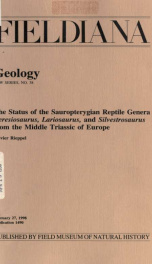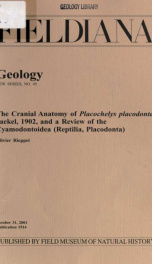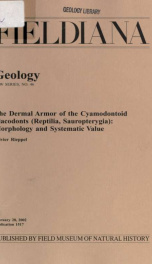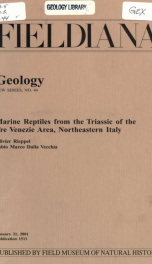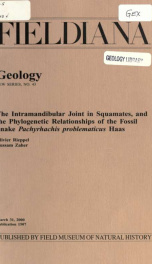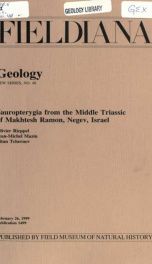Simosaurus gaillardoti H.v. Meyer, 1842, is recognized as the only species of its genus. An amended diagnosis of the genus is given here. Simosaurus mougeoti H.v. Meyer, 1842, is a lower jaw of Nothosaurus; Simosaurus guilielmi H.v. Meyer, 1847-1855, is a junior synonym of Simosaurus gaillardoti. The skeletal morphology of Simosaurus is redescribed in detail and compared to that of other stem-group (non plesio- and pliosaur) Sauropterygia (including Placodus). Ninety-four skeletal characters are defined and used in a phylogenetic analysis. Placodus is shown to be the sister-taxon of the Eosauropterygia, placodonts and eosauropterygians together constituting the monophyletic Sauropterygia. Within the Eosauropterygia, Corosaurus is the sister-taxon of an unnamed clade comprising Pacypleurosauroidea plus Eusauropterygia. Simosaurus is the sister-taxon to all other eusauropterygians included in the analysis (the Cymatosaurus-Nothosaurus-Lariosaurus-Pistosaurus clade). Functional morphological correlates of the skeleton suggest that Simosaurus was capable of sustained swimming in the shallow epicontinental sea in pursuit of prey such as "holostean"-grade fishes and, perhaps, ammonites Includes bibliographical references (p. 76-81) Simosaurus gaillardoti H.v. Meyer, 1842, is recognized as the only species of its genus. An amended diagnosis of the genus is given here. Simosaurus mougeoti H.v. Meyer, 1842, is a lower jaw of Nothosaurus; Simosaurus guilielmi H.v. Meyer, 1847-1855, is a junior synonym of Simosaurus gaillardoti. The skeletal morphology of Simosaurus is redescribed in detail and compared to that of other stem-group (non plesio- and pliosaur) Sauropterygia (including Placodus). Ninety-four skeletal characters are defined and used in a phylogenetic analysis. Placodus is shown to be the sister-taxon of the Eosauropterygia, placodonts and eosauropterygians together constituting the monophyletic Sauropterygia. Within the Eosauropterygia, Corosaurus is the sister-taxon of an unnamed clade comprising Pacypleurosauroidea plus Eusauropterygia. Simosaurus is the sister-taxon to all other eusauropterygians included in the analysis (the Cymatosaurus-Nothosaurus-Lariosaurus-Pistosaurus clade). Functional morphological correlates of the skeleton suggest that Simosaurus was capable of sustained swimming in the shallow epicontinental sea in pursuit of prey such as "holostean"-grade fishes and, perhaps, ammonites Fieldiana series has been published as Geological Series by Field Columbian Museum (1895-1909) and Field Museum of Natural History (1909-1943), and as Fieldiana: Geology by Chicago Natural History Museum (1945-1966) and Field Museum of Natural History (1966-1978). Fieldiana Geology New Series No. 1 began June 29, 1979





